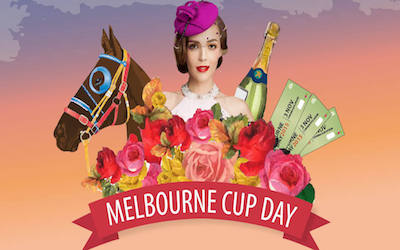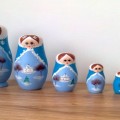一年一度的Melbourne Cup马上就要在下周二举行了,从本周末开始就有大批的市民盛装打扮去Flemington去参加这场盛大的赛马节。大多数同学都只知道去了是为了赌马,盛装打扮参加Party,但Melbourne Cup的由来可能很多同学都并不是特别清楚。今天墨尔本悉尼文波PTE就在给大家一边普及Melbourne Cup的历史由来的同时,带着大家练一下reorder paragraph。
1 Launch of the Victoria Racing Club
Flemington became a marvel under the early administration of the VRC. First secretary Robert C. Bagot and his successor Henry Byron Moore improved all facets of the racecourse – for horses, trainers and the public – to make Flemington a premier sporting and recreation centre.
The Victoria Racing Club (VRC) evolved from two earlier rival clubs, the Victoria Turf Club (1852) and Victoria Jockey Club (1857), who disbanded to create the new club in 1864. They had previously run their own separate racemeetings at the racecourse. Before the Victoria Turf Club began, self-appointed committees of interested horse owners had organised the annual races.
Currently, the Club employees 184 staff, aside from its sizeable event-based workforce contingent, in order to run 23 racemeetings per season including the world-renowned Melbourne Cup Carnival.
From 1864 until the end of 2001, the VRC acted as the principal authority responsible for the conduct of racing in Victoria (Racing Victoria Ltd now fulfils that role). In August 2006, the VRC was incorporated to become Victoria Racing Club Limited. The Club is governed by a Board of Directors, elected by the Members of the Club.
2 Where did it all begin?
In 1861, at the first running of the Melbourne Cup, the race club committee could hardly have envisaged the Cup lasting a century and a half and growing to become a significant part of our social and sporting culture.
By 1880, 100,000 people would make the journey to Flemington to attend the Cup. As Melbourne’s population was only 290,000 at the time, this attendance was quite phenomenal, and many visitors came from the country and other Australian colonies, too. These were flourishing times as Melbourne continued to grow during and after the gold rush period.
At the time of the first Cup, Victoria was experiencing the gold rush and many people had flocked to Melbourne, Bendigo and Ballarat in the hope of finding gold.
In front of an estimated crowd of 4000 people, Archer became the first winner of the Melbourne Cup. Victorians, and the wider Australian community, were already displaying their great passion for thoroughbred racing.
3 Evolution of the trophy
In 1980, the making of the Cup was then entrusted to Hardy Brothers Jewellers and the same processes that commenced in 1919 are still followed to this day. Hardy Brothers Jewellers Chief Executive Stuart Bishop is entrusted with this responsibility today. It is made of 44 pieces of gold metal, hand beaten over 250 hours.
The Emirates Melbourne Cup Trophy is a stunning 18 carat gold trophy noted for its three-handled “loving cup” design. It is a national icon embedded in Australia’s cultural fabric and one of the most identifiable sporting trophies in the world.
The Cup, as we know it today, was designed by Mr James Steeth in readiness for the 1919 Melbourne Cup, won by Artilleryman. He was commissioned by the VRC to design a trophy which would be in keeping with the prestige of the race. The trophy was manufactured by Drummonds Jewellers, and Maurice Steeth took over crafting the Cup from his father following James’ death, yet following Maurice’s premature death, it was left to his able assistant ‘Lucky’ Rocca to continue the tradition.
看完了这些后是不是发现对于Melbourne Cup的历史已经有了一些了解,而且也顺便练习了reorder paragraphs,一举两得!
做完后如果想知道正确答案请加微信wenbo_tv2,我们会第一时间告诉您正确答案哦!
正确答案:第一篇:2143,第二篇:1432,第三篇:312。
墨尔本悉尼文波PTE原创首发
更多精彩请加微信wenbo_tv2。





